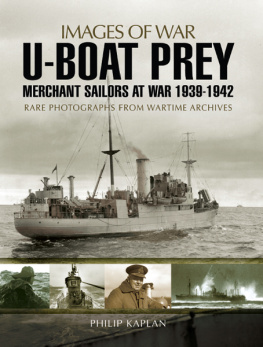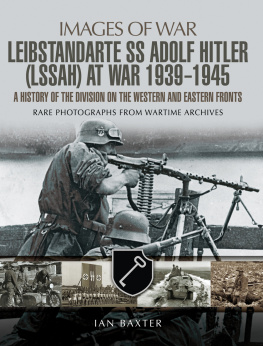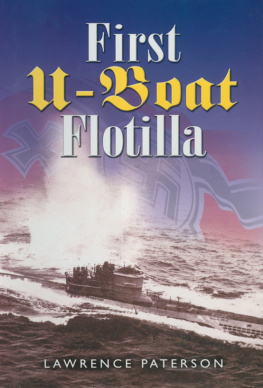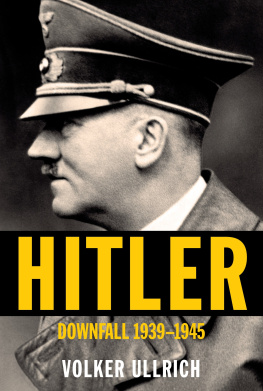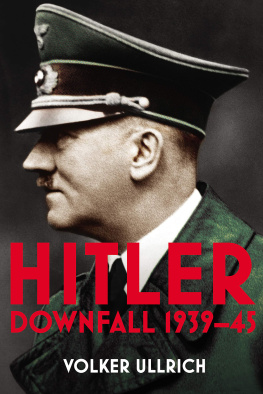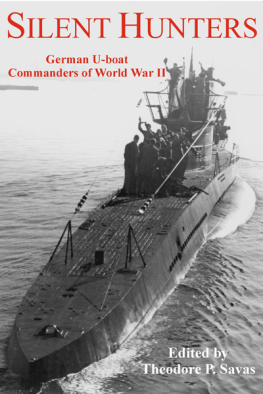Clay Blair - Hitler’s U-Boat War: The Hunters, 1939–1942
Here you can read online Clay Blair - Hitler’s U-Boat War: The Hunters, 1939–1942 full text of the book (entire story) in english for free. Download pdf and epub, get meaning, cover and reviews about this ebook. year: 2000, publisher: Modern Library, genre: History. Description of the work, (preface) as well as reviews are available. Best literature library LitArk.com created for fans of good reading and offers a wide selection of genres:
Romance novel
Science fiction
Adventure
Detective
Science
History
Home and family
Prose
Art
Politics
Computer
Non-fiction
Religion
Business
Children
Humor
Choose a favorite category and find really read worthwhile books. Enjoy immersion in the world of imagination, feel the emotions of the characters or learn something new for yourself, make an fascinating discovery.

- Book:Hitler’s U-Boat War: The Hunters, 1939–1942
- Author:
- Publisher:Modern Library
- Genre:
- Year:2000
- Rating:4 / 5
- Favourites:Add to favourites
- Your mark:
- 80
- 1
- 2
- 3
- 4
- 5
Hitler’s U-Boat War: The Hunters, 1939–1942: summary, description and annotation
We offer to read an annotation, description, summary or preface (depends on what the author of the book "Hitler’s U-Boat War: The Hunters, 1939–1942" wrote himself). If you haven't found the necessary information about the book — write in the comments, we will try to find it.
Hitler’s U-Boat War: The Hunters, 1939–1942 — read online for free the complete book (whole text) full work
Below is the text of the book, divided by pages. System saving the place of the last page read, allows you to conveniently read the book "Hitler’s U-Boat War: The Hunters, 1939–1942" online for free, without having to search again every time where you left off. Put a bookmark, and you can go to the page where you finished reading at any time.
Font size:
Interval:
Bookmark:

N ONFICTION
The Atomic Submarine and Admiral Rickover
The Hydrogen Bomb, with James R. Shepley
Beyond Courage
Valley of the Shadow, for Ward M. Millar
Nautilus 90 North, with William R. Anderson
Diving for Pleasure and Treasure
Always Another Dawn, with A. Scott Crossfield
The Voyage of Nina II, for Robert Marx
The Strange Case of James Earl Ray Survive!
Silent Victory: The U.S. Submarine War Against Japan
The Search for JFK, with Joan Blair
MacArthur Combat Patrol
Return From the River Kwai, with Joan Blair
A Generals Life, with Omar N. Bradley
Ridgways Paratroopers
The Forgotten War: America in Korea
1950-1953 Hitlers U-boat War: The Hunted, 1942-1945
F ICTION
The Board Room
The Archbishop
Pentagon Country
Scuba!, with Joan Blair
Mission Tokyo Bay, with Joan Blair
Swordrays First Three Patrols, with Joan Blair
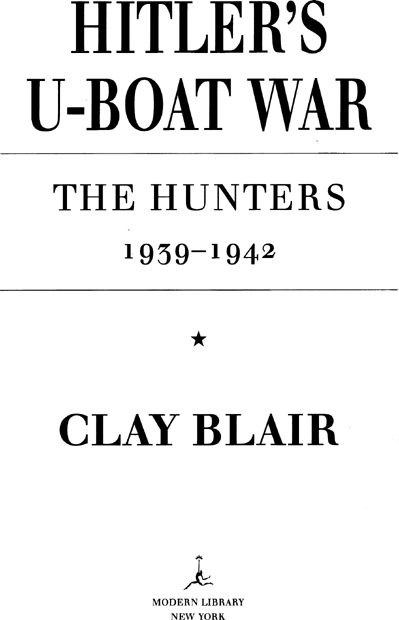
This book is dedicated to the late Time-Life Washington bureau chief James R. (Jim) Shepley, founding father of the Shepley School of Journalism, which in 1950-1951 had one student (me); to the peerless book editor, Marc Jaffe, who first suggested and sponsored my pursuit of serious history; to my agents, Jack Scovil and Russ Galen, who found the wherewithal; and to my wife, Joan, my collaborator in the fullest sense of the word on this book, as on many others.
O n a chilly day in the late fall of 1945, our submarine, the U.S.S. Guardfish, proudly flying battle pennants, nosed into the Submarine Base, New London, Connecticut, joining scores of mass-produced sister ships, all home from the sea.
Collectively we submariners were known as the Silent Service, and proud we were of that distinction. Unknown to the public, we had played a decisive role in the defeat of Japan. In forty-two months of secret warfare in the Pacific Ocean area, 250 of our submarines, mounting 1,682 war patrols, had savaged Japanese maritime assets, sinking 1,314 ships of 5.3 million gross tons, including twenty major warships: eight aircraft carriers, a battleship, and eleven cruisers. For almost three years Guardfish, a fine boat, had played a prominent role in that war, sending nineteen confirmed ships to the bottom (including two fleet destroyers and a patrol boat) during twelve long and arduous war patrols in Japanese-controlled waters.
After we had moored at a pier where we were to mothball Guardfish, we were startled to see a strangely different submarine close by. Painted jet black, she looked exceptionally sleek and sinister. We soon learned that she was a German U-boat that had surrendered shortly after VE-Day. She was manned by an American crew that was evaluating her on behalf of naval authorities in Washington.
This U-boat was very hush-hush and off-limits to ordinary souls. However, when she shifted her berth to our pier (and nicked us in the process), we became friendly with the American crew and gradually talked our way on board for a look-see. We learned that she was U-2513, a brand new Type XXI electro boat, one of two such craft allotted to the U.S. Navy as war prizes. Commissioned and commanded by one of Germanys most famous U-boat aces, Erich Topp, she and her mass-produced sister ships had been completed too late to participate in the war.
In our superficial examination of U-2513, we were quite impressed with some of her features, especially her top speed submerged. She had six sets of storage batteries, comprising a total of 372 cells (hence electro boat), which enabled her to quietly sprint submerged at about 16 knots for about one hour. This was twice the sprint speed of our submarines and sufficient to escape from almost any existing antisubmarine warship. Alternately, the large battery capacity enabled her to cruise submerged at slower speeds for a great many hours, whether stalking prey or escaping.
The next most impressive feature to us was her Schnorchel, or as we anglicized the German, snorkel. This was a sophisticated breathing tube or mast with air intake and exhaust ducts, which enabled U-2513 to run her two diesel engines while submerged. By rigging one diesel (or both) to charge the batteries while submerged, she could in theory remain underwater for prolonged periods, thereby greatly diminishing the chances of detection by enemy eyes or radar.
Nor was that all. Her periscope optics and passive sonar for underwater looking and listening were much superior to ours. Her ingenious hydraulically operated torpedo-handling gear could automatically reload her six bow torpedo tubes in merely five minutes. A third reload could be accomplished in another twenty minutes. The thickness and strength of her pressure hull was said to give her a safe diving depth limit of about 1,200 feet, twice our safe depth limit and sufficient to get well beneath most existing Allied depth charges. She even had an automatic pilot for precise depth-keeping at high speeds.
Much later, when some of these details and others about the Type XXI electro boat leaked out, they caused an utter sensation in naval circles. Prominent experts gushed that the Type XXI represented a giant leap in submarine technology, bringing mankind very close to a true submersible. Some naval historians asserted that if the Germans had produced the Type XXI submarine one year earlier they almost certainly could have won the Battle of the Atlantic and thereby indefinitely delayed Overlord, the Allied invasion of Occupied France.
The American evaluators on U-2513 were not so sure about these claims. In the classified report they sent to the Chief of Naval Operations, dated July 1946, they wrote that while the Type XXI had many, desirable features that should be exploited (big battery, snorkel, streamlining, etc.), it also had many grave design and manufacturing faults. The clear implication was that owing to these faults, the XXI could not have made a big difference in the Battle of the Atlantic. Among the major faults the Americans enumerated:
P OOR S TRUCTURAL I NTEGRITY . Hurriedly prefabricated in thirty-two different factories that had little or no experience in submarine building, the eight major hull sections of the Type XXI were crudely made and did not fit together properly. Therefore the pressure hull was weak and not capable of withstanding sea pressure at great depths or the explosions of close depth charges. The Germans reported that in their structural tests the hull failed at a simulated depth of 900 feet. The British reported failure at 800 feet, less than the failure depth of the conventional German U-boats.
U NDERPOWERED D IESEL E NGINES . The new model, six-cylinder diesels were fitted with superchargers to generate the required horsepower. The system was so poorly designed and manufactured that the superchargers could not be used. This failure reduced the generated horsepower by almost half: from 2,000 to 1,200, leaving the Type XXI ruinously underpowered. Consequently, the maximum surface speed was only 15.6 knots, less than any oceangoing U-boat built during the war and slightly slower than the corvette convoy-escort vessel. The reduction in horsepower also substantially increased the time required to carry out a full battery charge.
I MPRACTICAL H YDRAULIC S YSTEM . The main lines, accumulators, cylinders, and pistons of the hydraulic gear for operating the diving planes, rudders, torpedo tube outer doors, and antiaircraft gun turrets on the bridge were too complex and delicate and located
Font size:
Interval:
Bookmark:
Similar books «Hitler’s U-Boat War: The Hunters, 1939–1942»
Look at similar books to Hitler’s U-Boat War: The Hunters, 1939–1942. We have selected literature similar in name and meaning in the hope of providing readers with more options to find new, interesting, not yet read works.
Discussion, reviews of the book Hitler’s U-Boat War: The Hunters, 1939–1942 and just readers' own opinions. Leave your comments, write what you think about the work, its meaning or the main characters. Specify what exactly you liked and what you didn't like, and why you think so.

